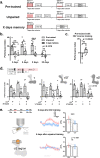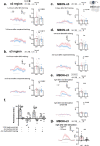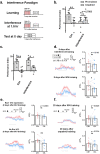Forgotten memory storage and retrieval in Drosophila
- PMID: 37935667
- PMCID: PMC10630420
- DOI: 10.1038/s41467-023-42753-x
Forgotten memory storage and retrieval in Drosophila
Abstract
Inaccessibility of stored memory in ensemble cells through the forgetting process causes animals to be unable to respond to natural recalling cues. While accumulating evidence has demonstrated that reactivating memory-stored cells can switch cells from an inaccessible state to an accessible form and lead to recall of previously learned information, the underlying cellular and molecular mechanisms remain elusive. The current study used Drosophila as a model to demonstrate that the memory of one-trial aversive olfactory conditioning, although inaccessible within a few hours after learning, is stored in KCαβ and retrievable after mild retraining. One-trial aversive conditioning triggers protein synthesis to form a long-lasting cellular memory trace, approximately 20 days, via creb in KCαβ, and a transient cellular memory trace, approximately one day, via orb in MBON-α3. PPL1-α3 negatively regulates forgotten one-trial conditioning memory retrieval. The current study demonstrated that KCαβ, PPL1-α3, and MBON-α3 collaboratively regulate the formation of forgotten one-cycle aversive conditioning memory formation and retrieval.
© 2023. The Author(s).
Conflict of interest statement
The authors declare no competing interest.
Figures








References
-
- Tulving E. Cue-Dependent Forgetting: When we forget something we once knew, it does not necessarily mean that the memory trace has been lost; it may only be inaccessible. Am. Scientist. 1974;62:74–82.
Publication types
MeSH terms
LinkOut - more resources
Full Text Sources
Medical
Molecular Biology Databases

